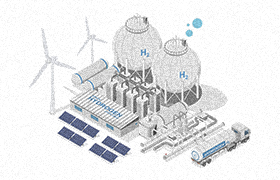
Interview: Simplicity was the key to transform Facilities Management category


Multinational consumer goods and tobacco company, Imperial Brands, had won the Silver medal as part of the annual Best-in-Class rankings published by Beroe.
In this interview, Benjamin Flynn, Imperial Tobacco’s Global Category Manager -- FM, Property & Utilities, explains how the company went about transforming its Facilities Management category. Flynn has 12 years of experience in Property-related procurement. Imperial Tobacco is part of the FTSE 100 company Imperial Brands PLC.
- Please provide a brief overview of the property landscape of Imperial Tobacco in Europe.
The property portfolio across Europe is split between the manufacturing and commercial spaces. In Europe, our manufacturing landscape consists of several different types of factories. For example, we have mass made cigars, cigarettes, papers and loose tobacco products. There is also variety on the commercial side, with large leased country/cluster headquarters in places such as Madrid, Paris and Hamburg alongside smaller touchdown spaces scattered all over Europe.
- What issues were affecting the facilities management category when you took over in 2014?
The facilities management category was very fragmented and localized with over 600 suppliers delivering services into 12 sites across Europe. As a result, there was very little leveraging of scale. There were individual sites and factories having different supply chains in place in countries where market maturity was high and strong national and international players were available.
With very few appropriate contracts in place, our supply chain risk profile was high, particularly considering that the multitude of mechanical and electrical providers were critical in enabling us to get quality products out to the market on time. Supply chain performance was also very opaque with no contractual key performance indicators (KPIs) in place, which again left us open to unnecessary risk.
- How did you go about setting up your category strategy, and which steps did you take to build trust and credibility among your stakeholders?
Moving into this role after working for seven years on the supply side, the opportunity to make an impact was obvious and clear. However, I have learned that one first must earn the right to execute a strategy, and that comes after one has built trust and credibility. To do that, I looked to prove some concepts on a smaller scale, such as leveraging scale across a service line on all the sites of one country. Such projects provided me with collateral to use when talking to a variety of stakeholders during the strategy development phase. This proved to be invaluable, as not only did it bring the theory to life and made the possibilities tangible but also demonstrated my understanding of the business.
The key stakeholders could now understand the value potential of a category that previously had very low status in the business. Then, the category strategy could start to take shape, and I was truly able to articulate what our aspiration should be and what it can deliver to the business.
- Please outline the objectives you set out to achieve once you had gained the trust of the stakeholders.
Not only were the objectives in tune to what the business was aiming to do across the board at a micro level, but they were also compelling enough to enable the stakeholders to get behind them.
- Simplification – reduction in complexity and consolidation of the supply base
- Cost out of 10 to 15 percent – day 1 with year-on-year improvements
- Leveraging of scale
- Added value – delivery models
- A scalable solution
- When a new plan is rolled out across regions, it is natural to expect some form of resistance. How did you overcome internal resistance?
As you say, it is very natural to face resistance to change regardless of the scale and impact. I believe that one can never engage too early or enough at all levels. This was definitely the approach we took right from the outset during the strategy development phase. Bringing in the right people to have an input during all phases meant that when it came to the execution and implementation, we faced little resistance to change as we were already pushing at an open door.
Referring to the previous question regarding objectives, making sure that these aligned with the business meant that the strategy would also support stakeholder objectives. This created the right level of pull from the business.
Moreover, as a team, we were flexible enough with our strategy to accommodate things along the way to enable a smooth transition. The team continued this proactive approach of working in the business, rather than passively have things happen to them.
- Did you deliver on the objectives? If yes, can you share the outcome?
- A blended saving of 17 percent and 2 million pounds across the portfolio on day 1
- A supply base reduction from about 600 to seven tier-1 providers
- Risk profile reduction – larger contracts enabled a much greater level of risk transfer
- Implementation of performance management – objective KPIs set in place
- A scalable solution – all selected suppliers had either the capability or geographical scope to expand in terms of services
- Ability to extract value year-on-year – exit rate of previous financial year was 0.5 million pounds
- What was your learning over the past four years, and how will it help you achieve your targets for 2019?
When one implements something on this scale and for this duration, the changing internal and external environments can have a big impact on whether the solution ‘sticks’ and delivers the anticipated value. The level of business engagement we had during the process facilitated information sharing, which enabled me to build flexibility into the solution and strategy. When I look back, this was probably one of the biggest positive outcomes.
In terms of phase 2, which is due for roll out in 2019, I would like to go back to the trust and credibility statement. As the first phase ‘worked and delivered more than we anticipated, it only strengthened my relationship with key stakeholders and the business. When we mapped out what 2019 and beyond should look like, we were able to take a much more considered approach in true collaboration with the business with all of the previous obstacles removed as well as improved understanding and clarity, unlike the ‘leap of faith’ we took the first time round. I am very confident that we will again deliver on our promises to the business by taking more advantage of what the market has to offer Imperial Tobacco.
Related Insights:
View All
Get more stories like this
Subscirbe for more news,updates and insights from Beroe






